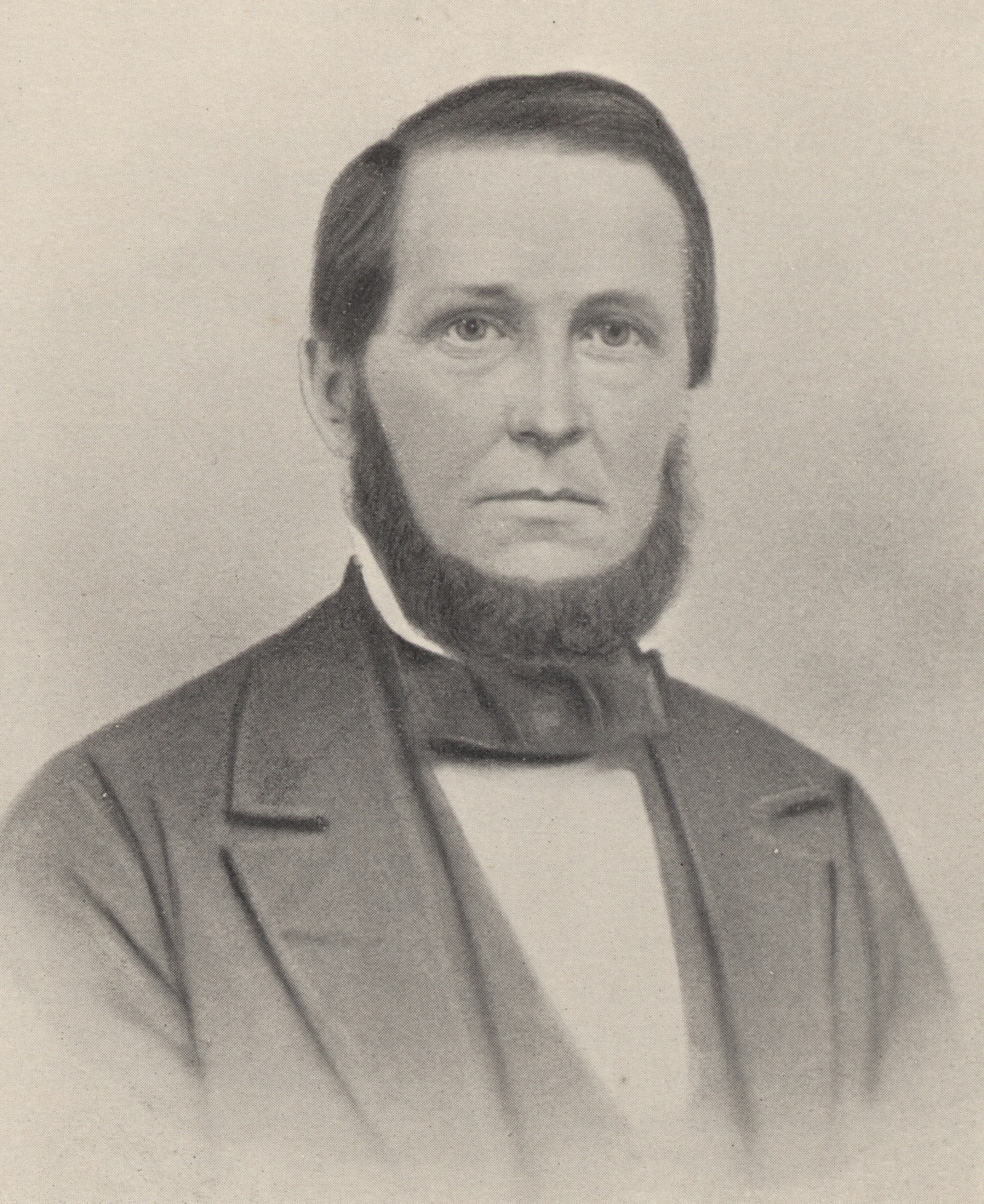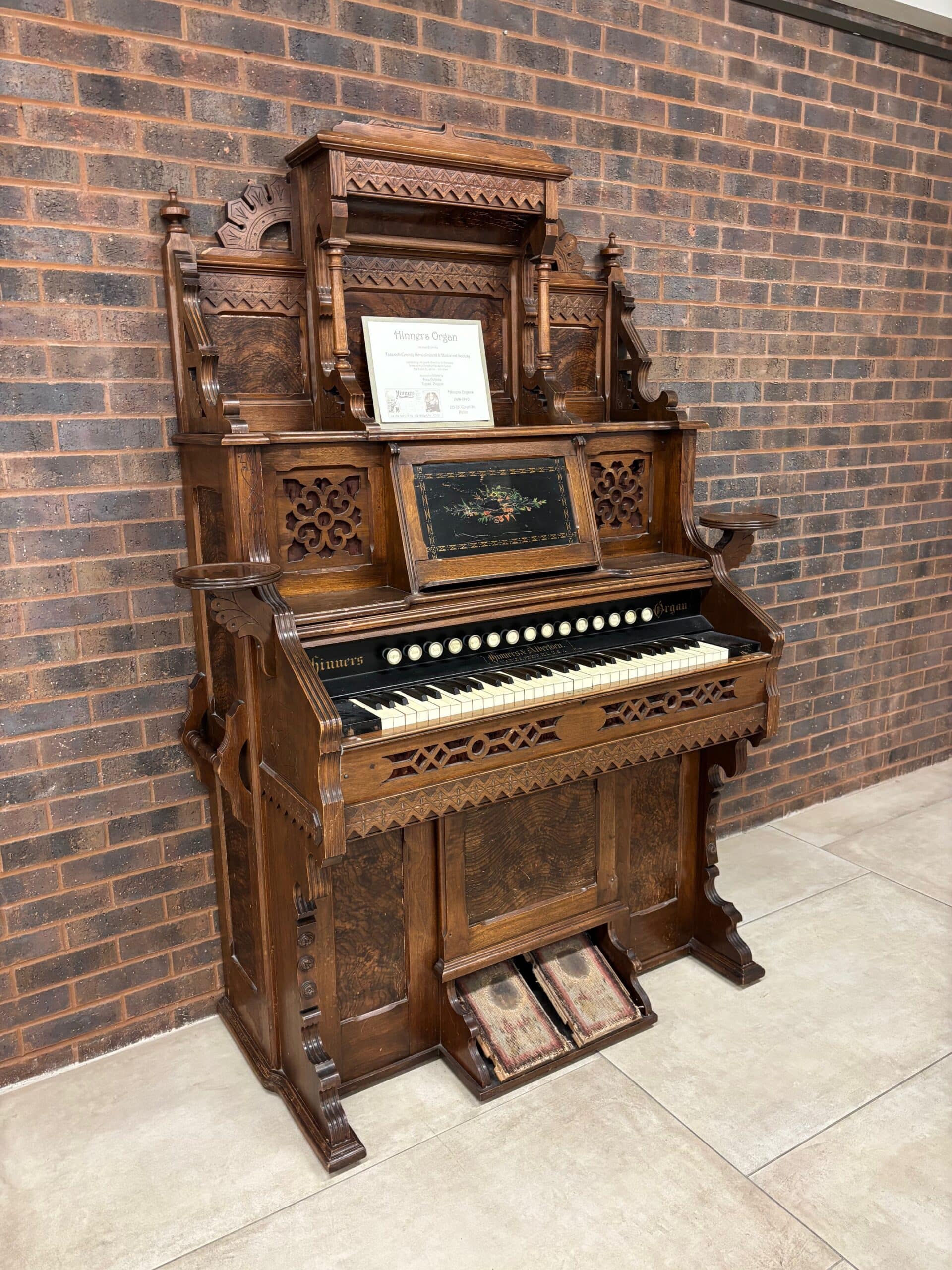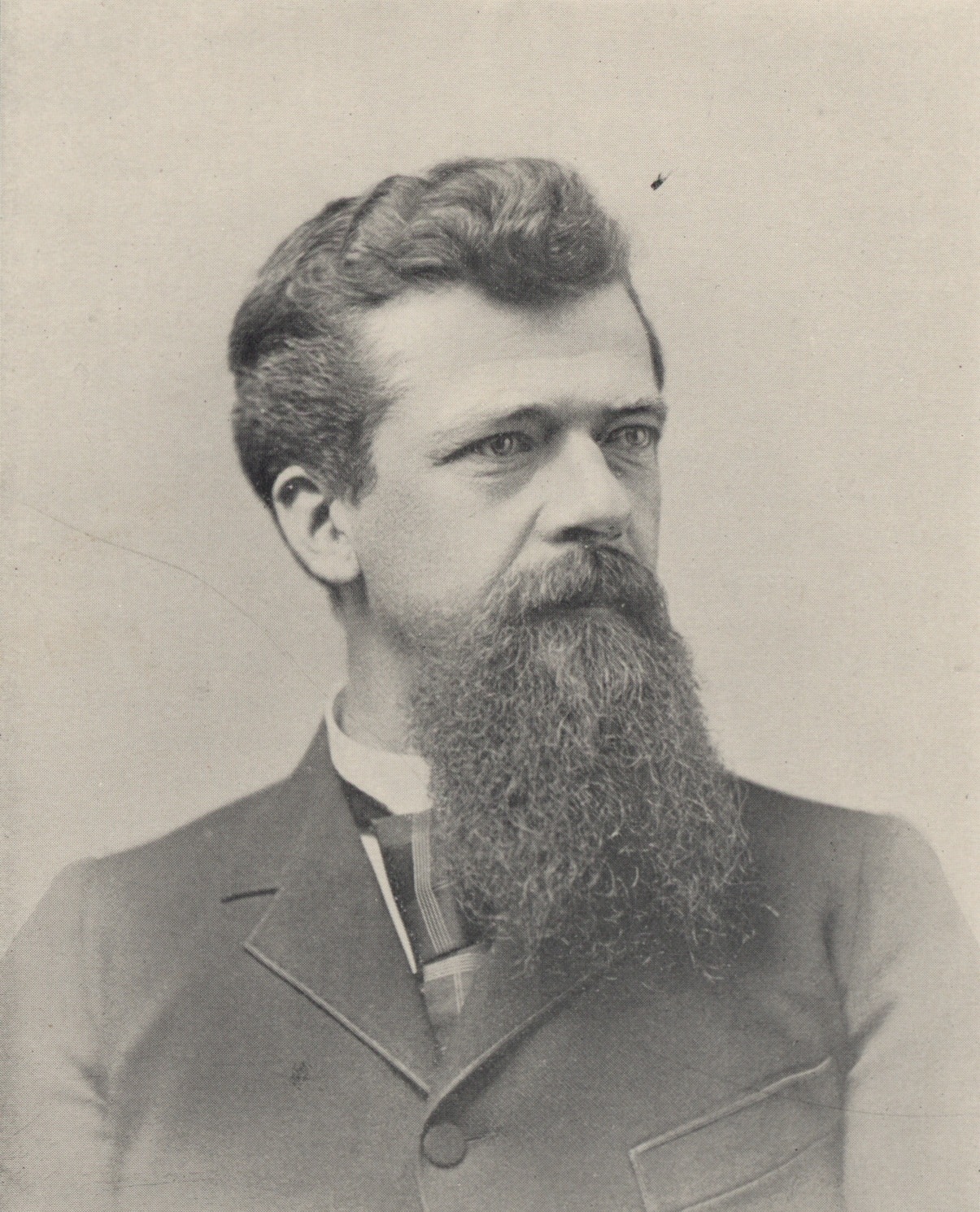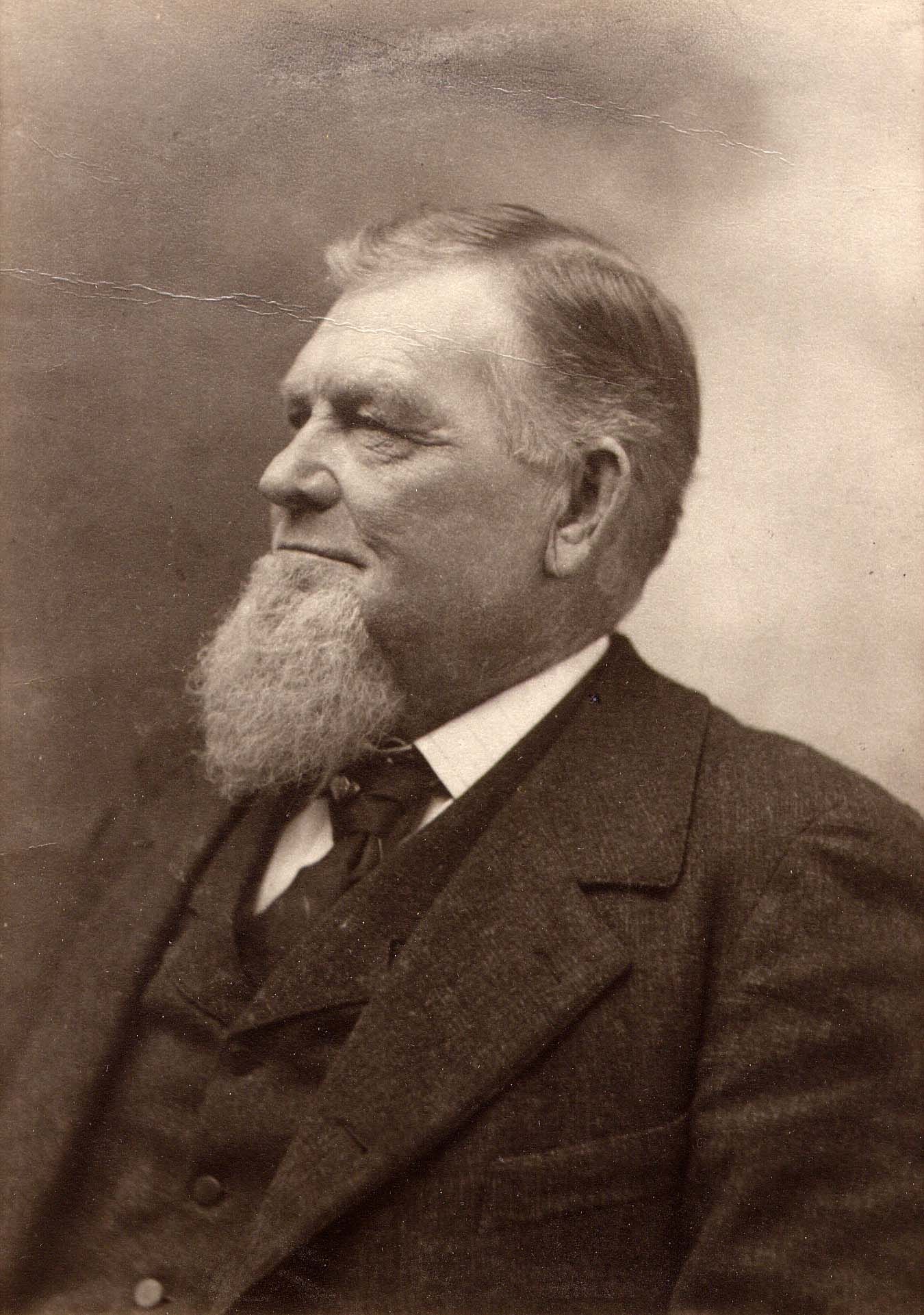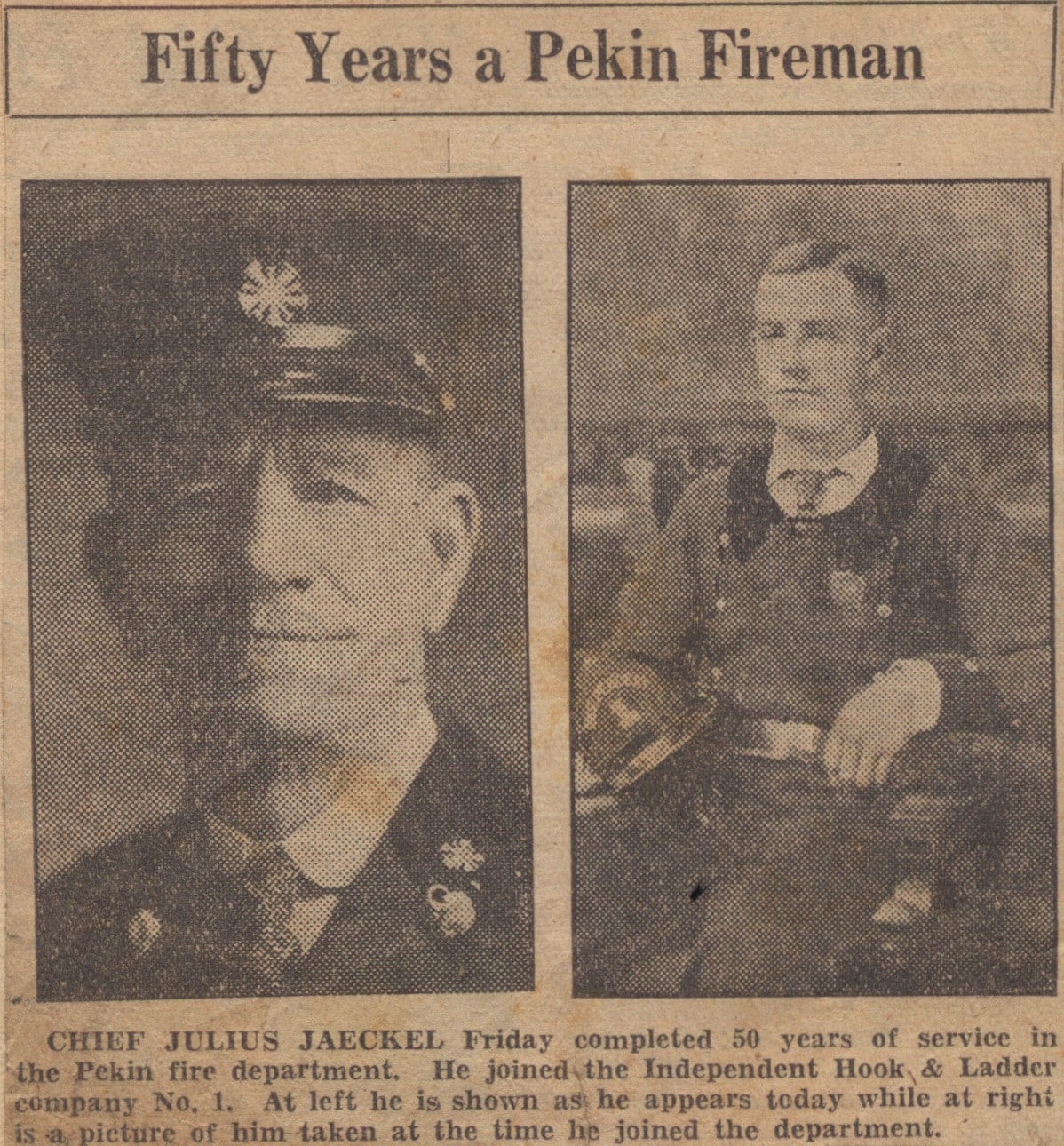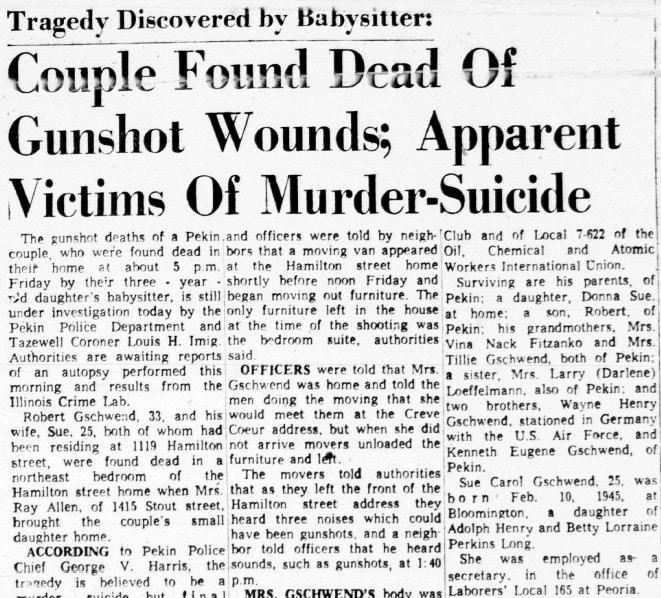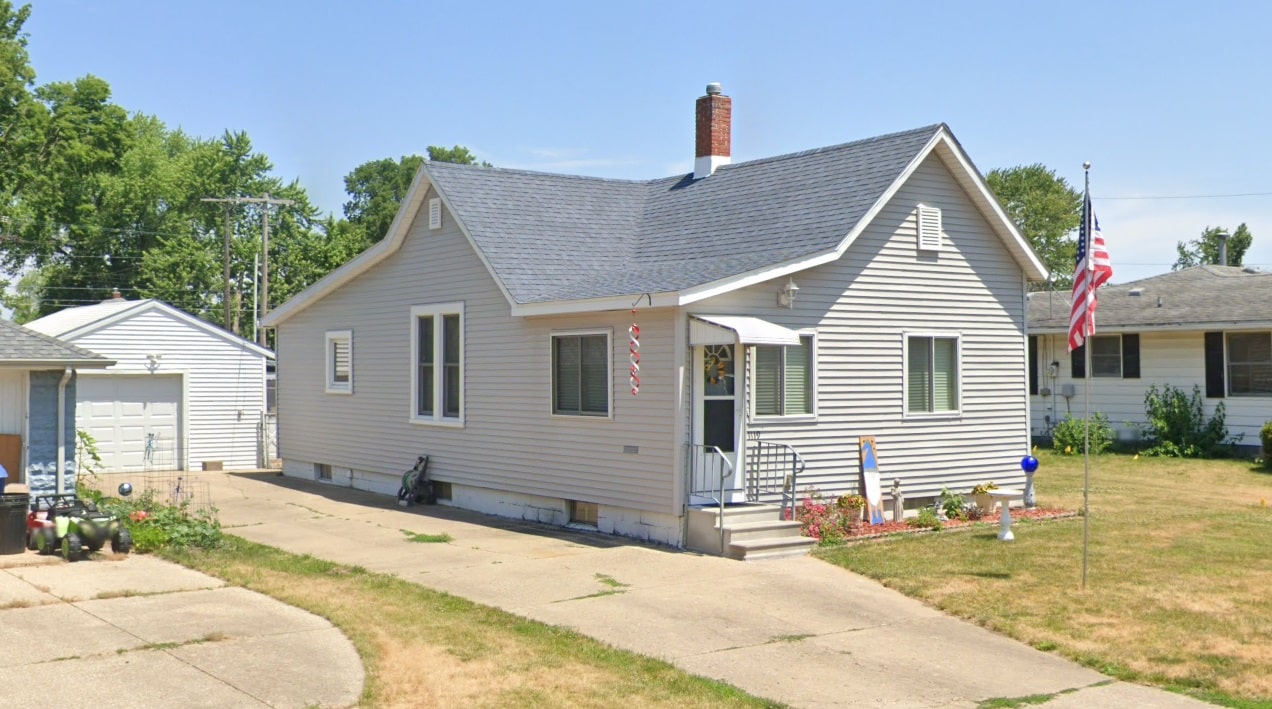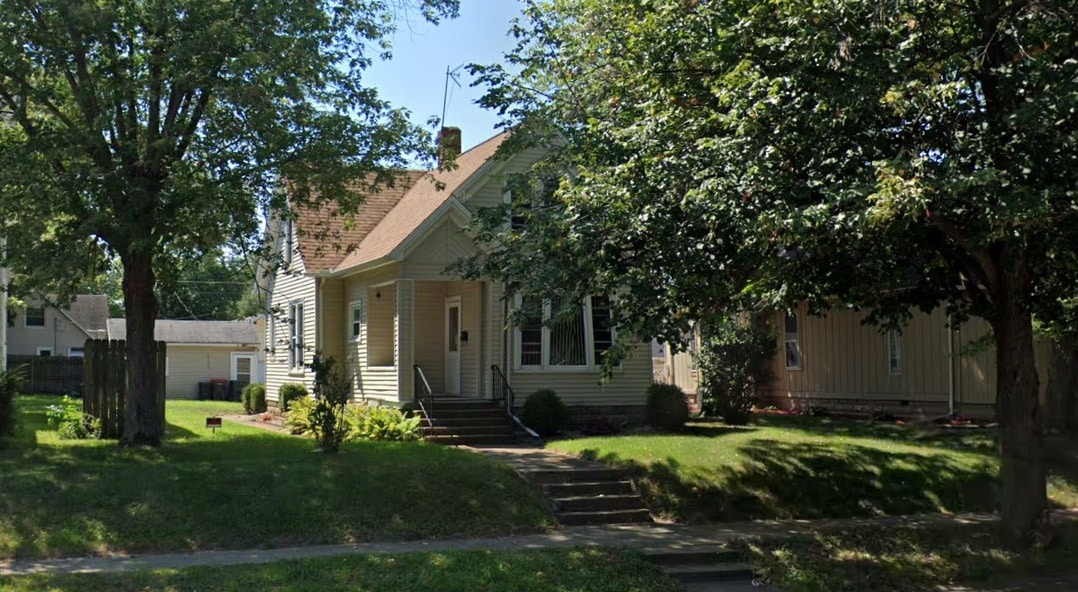In the course of our history of the house at 920 Broadway, we have encountered two instances when families who have lived at 920 Broadway were visited by tragic and untimely death. In 1935, the house’s owner Carl Heinlein succumbed to injuries that he suffered in a two-car collision just south of Pekin. In 1975, a few years after the Gardner family moved from 920 Broadway, they suffered the sudden loss of their daughter Jean Bolen, who was a 30-year-old wife and mother of four sons.
But this week, the story of this house and its residents brings us to the tragic and unnatural deaths of three members of family who had lived at 920 Broadway in the mid- to late 1970s: the Rotramels, who died about a year or so after moving from 920 Broadway.
Pekin city directories show that after the Gardners sold 920 Broadway and moved to a new home in Pekin, the family of Robert Deneen “Rocky” Rotramel (1935-1978), a carpenter who worked for Newberg Construction, and his wife Norma Jean (Jones) Rotramel (1941-1978) lived at 920 Broadway from 1973 to 1977-8, along with Norma’s sons from her previous husband James Childers, James Leroy “Jimmy” Childers (1961- ) and Warren S. Childers (1962-1978). Here are the Pekin city directory entries for the Rotramel family at the 920 Broadway address during these years:
- 1974 – Robert D. Rotramel, wife Norma, carp Newberg Constn; Wilbert J. Murphy, retd., 920 ½ Broadway
- 1975 – Ditto
- 1976 – Robert D. Rotramel, wife Norma, carp Newberg Constn; Joseph Turner, retd., 920 ½ Broadway
- 1977 – Ditto
- 1978 – Robert D. Rotramel, wife Norma, carp Newberg Constn; Joseph E. Turner, retd., 920 ½ Broadway
After the Rotramels, the 1979 Pekin city directory shows the residents of 920 Broadway as Ronald Bowman, a carpenter, and his wife Gale. They apparently moved there in 1978.


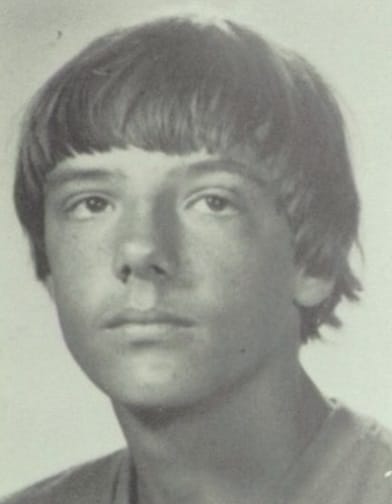
By 1978, the Rotramel family had moved from 920 Broadway to a house at 1218 S. Fifth St. that had been built in 1962. That is where they were living when, in the early morning hours of 9 July 1978, Jimmy Childers, 17, quarreled with his parents over his plans to marry his girlfriend and move out. The quarrel culminated in Jimmy shooting and stabbing his stepfather and mother repeatedly to death, then catching his younger brother Warren, 15, as he tried to escape and stabbing him repeatedly to death. Jimmy then tried to arrange the crime scene to look like a burglary gone dreadfully wrong. This was one of Pekin’s most notorious and most brutal murders in the city’s history, and was Pekin’s first triple homicide. Many of the police, first responders, and officials had very great difficulty working the crime scene.
Jimmy Childers, now 63, is currently serving three concurrent life sentences at Menard Correctional Center for the murder of his family. At his trial, Childers’ attorneys entered an insanity defense, but the courts have held that Childers’ depression is not sufficient to sustain an insanity defense, and he has lost all of his appeals. In 2020, Childers was re-sentenced to life in prison without possibility of parole following a U.S. Supreme Court decision that life without parole for a juvenile is unconstitutional, with one exception — and Childers’ crime was held to meet that exception.
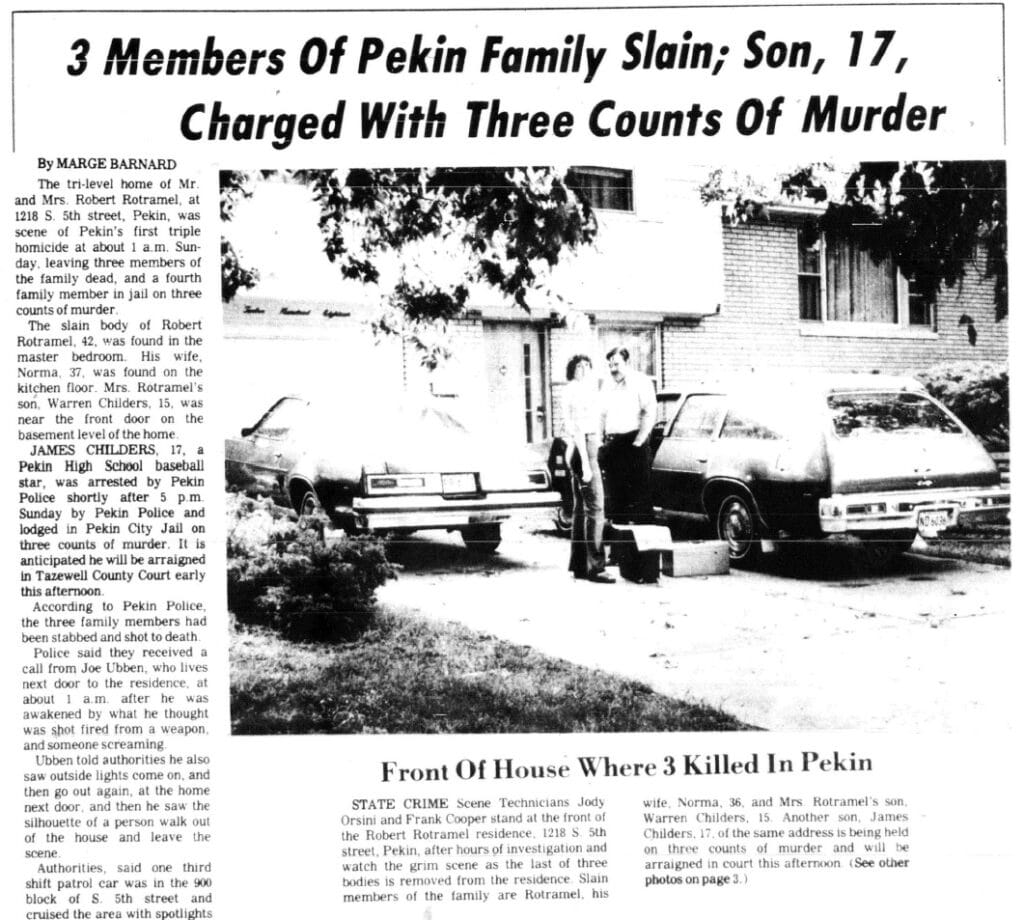
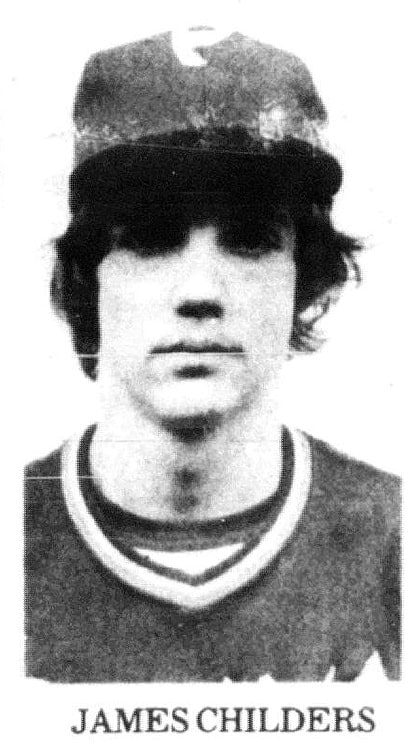
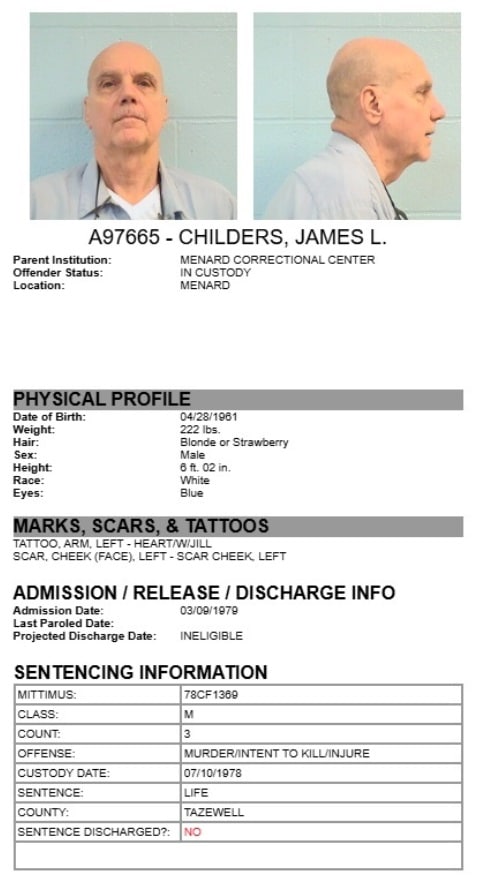
The court file of People v. Childers, 94 Ill. App. 3d 104 includes the following narrative of the murders and Childers’ confession:
The principal evidence at trial consisted of defendant’s confession. This revealed that he arrived home at about 1 a.m. on July 9, 1978, and after a quarrel with his stepfather and his mother he killed them by means of a handgun and a knife. He followed these homicides by killing his younger brother by stabbing him when he was apparently attempting to escape from the house. Defendant then ransacked the house in an attempt to create the appearance of a robbery and multiple homicides. He placed the weapon and knife he had used, money he had taken from the wallets of his parents, and the clothing he was wearing in a paper sack. He cleaned himself up, changed clothing and departed the premises, driving toward Peoria from the home in Pekin. On the way he threw the paper sack into the river from a bridge. Neither the sack nor its contents were ever recovered.
Defendant proceeded to his fiancee’s home where he threw his house key to his own home into the yard. It was subsequently recovered. He let himself into his fiancee’s home and attempted to sleep but was unable to do so.
Other evidence, aliunde the confession, revealed that at about 3 a.m. he called the police station and told the police, after identifying himself, that he had been unable to gain entry into his home at Pekin and asked that someone be sent there to investigate. He left the telephone number at which he could be reached. The police responded and discovered the bodies of the victims shortly afterwards.
The officer in charge of the investigation called the number which defendant had left with the police and asked him to come to the station house. He complied, arriving about 5:30 a.m. with his fiancee and her mother. He was wearing blue jeans and a red shirt. The officer informed defendant of what had been discovered at his Pekin home, whereupon he became very overcome emotionally. The officer then conducted an interview with the defendant. It was of a very general nature as to the family, who their friends were, what he knew about them and when he had last seen them. Defendant stated that he had remained with his fiancee during the evening hours up to about 1 a.m. at which time he had returned home but was unable to gain entry because he did not have his house key. He asserted that he had given it to his younger brother who had not returned it. He then asked how long he would be required to remain at the station house. The officer testified that he informed defendant that he would not be required to stay but that the police would appreciate his staying in order for them to obtain further information about the family. He further testified that defendant stated that he would stay as long as necessary, and that he would cooperate and help in any way he could.
The officer further testified that after the initial interview defendant’s fingerprints and palmprints were taken for comparison purposes. According to the officer, defendant approached him a short time thereafter and stated that he had forgotten to tell the police that he had changed clothing earlier in the evening before going home, and that he had placed this clothing between the front doors of the house. No such clothing was ever found. Shortly after this, defendant consented to a search of his car and of his person (fingernail scrapings and footprints). The consent on the car was obtained about 9 a.m. and consent for the person about 10:45 a.m. The officer testified that these searches were also for comparison purposes.
Meanwhile, the police had interviewed a neighbor to the Pekin home. He stated that he had been awakened at about 1 a.m. by muffled sounds, banging, screams and yelling, coming from the Pekin house. He further told the police that he saw all the lights in the house come on and then go off except for a small hall light, and that he saw a person in red clothing in the back bedroom window. Then, he stated, one of three cars in the driveway left being driven by someone he could not see. The officer in charge of the investigation first had the opportunity to review the neighbor’s statement sometime between noon and 1 p.m.
Sometime between 3:30 and 4 p.m. the officer confronted defendant with the neighbor’s statement. Defendant became somewhat emotional and stated that he wanted to tell the truth. He was given the Miranda warnings and then made a statement to the police which can be summarized as follows: He went to the house and entered using his own key; he found the bodies of his brother, stepfather, and mother; he picked up the gun which he found lying near his brother’s body and carried it around the house; during his tour of the house he became covered with blood and changed his clothing; he became frightened and left the house taking the bloody clothing and gun with him; he threw the clothing and gun into the river from the bridge while driving toward Peoria; he denied having anything to do with the killings. Following this second statement, the officer told defendant that he did not believe him. Defendant then asked to talk to his fiancee and this was permitted. He then made a third, or final statement, commencing at 5:37 p.m. and concluding at 5:58 p.m. The Miranda warnings were reiterated, and the third statement was the confession, the substance of which has been set forth above. At the conclusion of the statement defendant was arrested on charges of murder.
At trial defendant presented an insanity defense and called only two witnesses, both psychiatrists. One stated that defendant suffered from an “acute depressive reaction” and at the time of the offense lacked substantial capacity to appreciate the nature of his conduct and the criminality involved. The second doctor reached similar conclusions and diagnosed defendant as having a psychoneurotic depressive reaction. He stated that even if a policeman had been present at the time, it would have been impossible for defendant to conform his conduct to the requirements of the law.
In rebuttal, the State presented three experts. All of them stated that defendant was capable of conforming his conduct and appreciating the criminality of his actions. One of the State’s experts was Dr. Philipp Bornstein, a psychiatrist, who stated that defendant suffered from unipolar depression, a term which indicated that defendant was depressed at all times.
Notably, the Pekin city directories never list the Rotramels at 1218 S. Fifth St. The 1978 and 1979 directories both list that address as “vacant,” which would suggest they lived there less than a year when the horrific murders occurred. Next week we will complete our account of the history of 920 Broadway, bringing it to the present day. However, we will conclude this week with a summary review of Pekin city directory entries for the residence at 1218 S. Fifth St., which was inherited by Robert Rotramel’s daughter Debra.
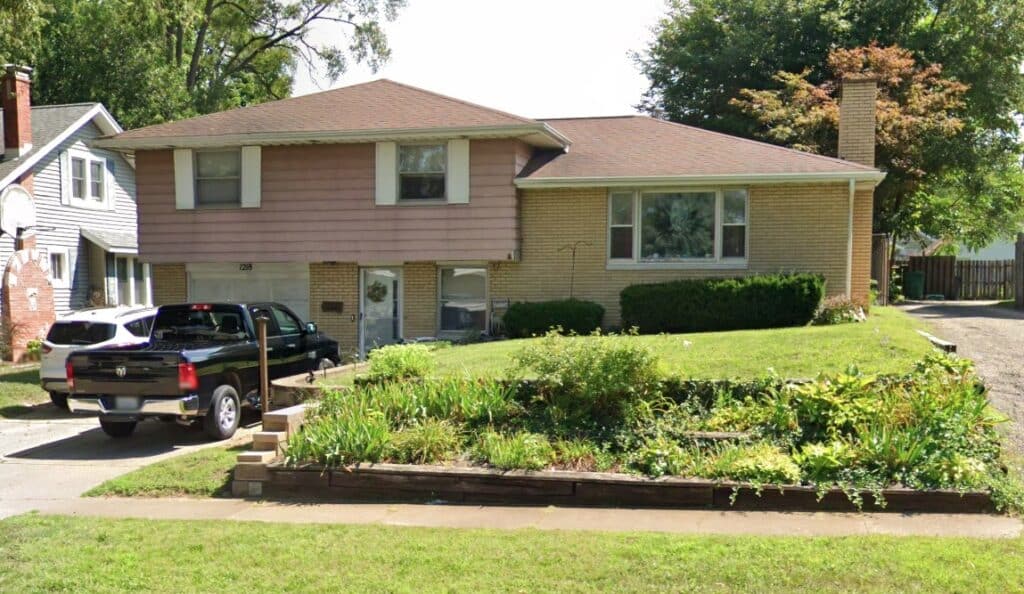
- 1962 – Vacant [home numbered 1216 S. Fifth]
- 1964 – Ditto
- 1965 – Leslie D. Puterbaugh (1932-2010), wife Joanne (1936-2021), Research Dept. wkr Caterpillar [home now numbered 1218 S. Fifth]
- 1966-1973 – Ditto
The Puterbaughs moved to 611 Park Ave. at about this time.
- 1974 – James H. Scamp (1934-2005), wife Eileen B., agt Prudential Ins.
- 1975 – Jerry Davis (1940-2025), wife Delores, Carriage House Realty
- 1976 – Ditto
- 1977 – Ditto
- 1978 – Vacant
- 1979 – Vacant
- 1980 – Debra Rotramel, ofc sec Morton S. Goldfine
- 1981 – Ditto
Debra E. Rotramel (1957- ) married on 6 June 1981 to Warren I. Payton (1953- ).
- 1982 – Warren I. Payton (Debra E.) emp Aljan Inc., Peoria, Mrs. Debra E. Payton ofc sec Norton S. Goldfine, Peoria
- 1983 – Ditto
- 1984 – Mrs. Debra E. Payton ofc sec Norton S. Goldfine, Peoria; Warren I. Payton (Debra E.) emp Aljan Inc., Peoria
- 1985 – Ditto
- 1986 – Ditto
- 1987 – Mrs. Debra E. Payton assoc Coldwell Banker Olt & Griffin Realtors, Warren I. Payton (Debra E.) mgr Long John Silvers
- 1988 – Ditto
- 1989 – Ditto
- 1990 – No return
- 1991 – No return
- 1992 – No return
- 1998 – Michael E. Hay (1946-2016) tchr Pekin Community High School
- 1994 – No listing
- 1995 – Michael and Linda Hay, emp Pekin High School
- 1996 – Not verified
- 1997 – Michael Hay instr Pekin Community High School
- 1998 – Michael E. Jay and Linda S. Hay, educator
- 1999-2008 – Ditto
- 2009 – Michael E. Hay and Linda S. Hay, tchr
- 2010-2017 – Ditto
- 2018 – Glenna M. Downing
- 2019 – Glenna M. Downing, Michael E. Hay, tchr, Linda S. Hay
- 2020 – Glenna M. Downing
- 2021 – Michael E. and Linda S. Hay
- 2022 – Linda S. Hay, Elizabeth M. Hay
- 2023 – Ditto
- 2024 – Ditto
The history of the house at 920 Broadway concludes next week.



